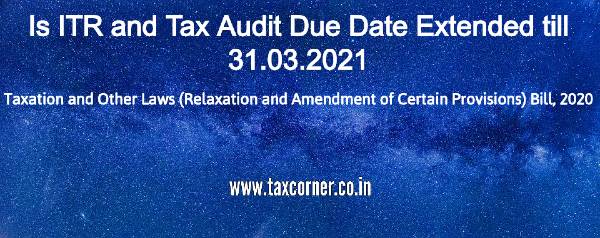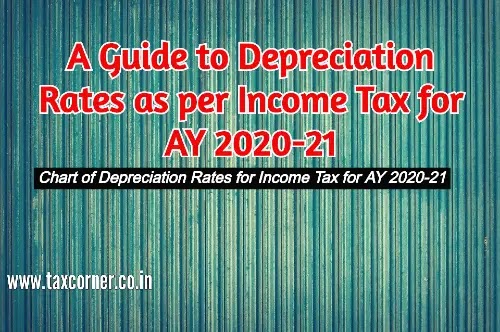CBDT vide a clarification dated 04.05.2023 issued clarifications on FAQ 6 (reporting) and FAQ 3 (reporting) issued by the U.S. IRS in respect of FATCA reportable accounts.
Read the full text of the Clarifications on US IRS FAQs for FATCA dated 04.05.2023
F. No. 500/107/2015-FT&TR-III
Government of India
Ministry of Finance
Department of Revenue
(Foreign Tax & Tax Research Division)
Dated the 04th May, 2023
Subject: Clarification on FAQ 6(reporting) and FAQ 3 (reporting) issued by U.S. IRS in respect of FATCA reportable accounts
Kindly refer to the earlier clarification issued in reference to the above subject on 31 January 2022 (https://www.incometaxindia.gov.in/Documents/exchange-ofinformation/FATCA-clarification-FAQ6-and-FAQ3.pdf). In this regard, the US IRS has recently updated FAQ 6(reporting) in accordance with Notice 2023-11 with respect of US reportable accounts under the FATCA Intergovernmental Agreement between the United States of America and other Model 1 jurisdictions.
2. FAQ 6(reporting) issued by the U.S. IRS states as under:
“As a Model 1 FFI you are required to obtain and exchange the U.S. taxpayer identification number (TIN) data element for each specified U.S. person that is an account holder or a controlling person of a non-U.S. entity (a specified U.S. person) in accordance with the Intergovernmental Agreement (IGA) between the United States of America and your Model 1 jurisdiction.
However, in the IRS’ efforts to better understand the issues that FFIs face in obtaining a U.S. TIN, the IRS has developed a series of codes that may be used by a reporting Model 1 FFI to populate the TIN field where the TIN has not been obtained in specified scenarios. The use of these codes is not mandatory and does not mean that an FFI will not be at risk for being found significantly non-compliant due to a failure to report each required U.S. TIN. The IRS will take into account the facts and circumstances leading to the absence of the U.S. TIN, such as the reasons why the TIN could not be obtained, whether the FFI has adequate procedures in place to obtain TINs, and the efforts made by the FFI to obtain TINs. For example, whether the FFI is contacting account holders annually to request any missing TINs. The expectation is that the use of these codes will allow our tax administrations to better understand the facts and circumstances behind the missing U.S. TINs, both in general and with respect to a specific reporting Model 1 FFI. The TIN field code and related scenarios are as follows:
• 222222222 – Preexisting individual account with only U.S. indicia being a U.S. place of birth.
• 333333333 – New individual account that (1) has indicia of a U.S. place of birth, and (2) either:
o (a) has a change in circumstances causing the self-certification originally obtained at account opening to be incorrect or unreliable, and a new self-certification has not been obtained, or
o (b) was below the threshold for documenting and reporting the account at the time of account opening and subsequently exceeded the threshold, and a self-certification has not been obtained.
• 444444444 – Preexisting individual and entity account that (1) has U.S. indicia other than a U.S. place of birth, and (2) either:
o (a) has a change in circumstances, causing the self-certification or other documentation originally obtained to be incorrect or unreliable, and a new selfcertification or other documentation has not been obtained, or
o (b) was below the threshold for documenting and reporting the account at the time of account opening and subsequently exceeded the threshold, and a self-certification or other documentation has not been obtained.
• 555555555 – New individual and entity account that has a U.S, indicia other than a U.S. place of birth, and (2) either:
o (a) has a change in circumstances causing the self-certification or other documentation originally obtained to be incorrect or unreliable, and a new selfcertification or other documentation has not been obtained, or
o (b) was below the threshold for documenting and reporting the account at the time of account opening and subsequently exceeded the threshold, and a self-certification or other documentation has not been obtained.
• 666666666 – Preexisting entity account with account balance exceeding $1,000,000 held by a passive NFFE with respect to which no self-certifications have been obtained, and no U.S. indicia has been identified in relation to its controlling persons.
• 777777777 – For pre-existing accounts where there is no TIN available and the account has been dormant or inactive, but remains above the reporting threshold, also known as a “dormant account”. For reference, the U.S. defines “dormant account” in U.S. Treasury Regulations §1.1471-4(d)(6)(ii).
In January 2023, the IRS issued Notice 2023-11 which provides reporting relief to Model 1 FFIs who have been unable to obtain U.S. TINs for their pre-existing accounts that are U.S. reportable accounts if they follow the procedures in the Notice. As a result of the Notice, the IRS has updated the above series of TIN codes. Reporting for calendar year 2022 (due by September 30, 2023) is considered to be a transition year, and to be eligible for relief Model 1 FFIs must either use the TIN codes issued in May 2021 or the following updated TIN codes.
For reporting on calendar years 2023 (due by September 30, 2024) and 2024 (due by September 30, 2025), a reporting Model 1 FFI must use the following updated codes that identify features of these accounts that may explain why the reporting Model 1 FFI cannot report a U.S. TIN. The use of these codes will allow the IRS to better understand the facts and circumstances behind the missing U.S. TINs. The updated TIN field code and related scenarios are as follows:
• 222222222 Preexisting individual account with only U.S. indicia being a U.S. place of birth, other than an account reported under code 000222111. This code takes precedence if any other code (other than 000222111) could also be applicable.
• 000222111 Preexisting depository individual account with only U.S. indicia being a U.S. place of birth. Additionally, FFI must determine that the account holder is a resident of the jurisdiction where the account is maintained for AML and tax purposes. For reference, “depository account” has the meaning defined in the applicable Model 1 Intergovernmental Agreement (Model 1 IGA). This code takes precedence if any other code could also be applicable.
• 333333333 New individual account that:
(1) has indicia of a U.S. place of birth, and
(2) either:
(a) has a change in circumstances causing the self-certification originally obtained at account opening to be incorrect or unreliable, and a new self-certification has not been obtained, or
(b) was below the threshold for documenting and reporting the account at the time of account opening and subsequently exceeded the threshold, and a selfcertification has not been obtained.
• 444444444 Preexisting individual or entity account that:
(1) has U.S. indicia other than a U.S. place of birth, and
(2) either:
(a) has a change in circumstances that either results in one or more U.S. indicia being associated with the account or causes a self-certification or other documentation originally obtained to be incorrect or unreliable, and a valid self-certification or other documentation has not been obtained subsequent to the change in circumstances, or
(b) was below the threshold for documenting and reporting the account on the determination date provided in the applicable Model 1 IGA and subsequently exceeded the threshold, and a self-certification or other documentation has not been obtained.
• 555555555 New individual or entity account that:
(1) has a U.S. indicia other than a U.S. place of birth, and
(2) either:
(a) has a change in circumstances causing the self-certification or other documentation originally obtained to be incorrect or unreliable, and a new selfcertification or other documentation has not been obtained, or
(b) was below the threshold for documenting and reporting the account at the time of account opening and subsequently exceeded the threshold, and a selfcertification or other documentation has not been obtained.
• 666666666 Preexisting entity account held by a passive NFFE with one or more controlling persons with respect to which self-certifications have not been obtained, and no U.S. indicia have been identified in relation to any controlling persons.
• 777777777 Dormant Accounts – For pre-existing accounts where there is no TIN available and the account has been dormant or inactive, but remains above the reporting threshold, also known as a “dormant account.” A “dormant account” is one that meets the definition set out in U.S. Treasury Regulations §1.1471-4(d)(6)(ii) and had had no financial activity for three years, except for the posting of interest. If an account could be classified into multiple TIN codes, the other code takes precedence.
• 999999999 Any account for which the FFI cannot obtain a TIN and none of the other TIN codes would be applicable. The use of this code indicates that an FFI has completed its review of accounts without U.S. TINs and has in good faith applied TIN codes to records when applicable
The IRS system will still generate an error notification to indicate the entry is invalid when one of the above codes is used. The error notification will provide 120 days to correct the issues, which is consistent with Paragraph 4.2.2 “Administrative or Other Minor Errors” of the Competent Authority Arrangement (CAA). Consistent with the IGA (and the CAA, if applicable), if the TIN is not provided within that 120 day period, the U.S. will evaluate the data received (including whether the reporting Model 1 FFI complies with the conditions set forth in Notice 2013-11) and whether there is significant non-compliance based on the facts and circumstances. (See Reporting FAQ #3 for a full discussion of the significant noncompliance process.)”
3. In view of the above, the Indian Reporting Financial Institutions (RFIs) should ensure that the U.S. TIN is reported in respect of all U.S. Reportable accounts. However, if the U.S. TIN is not obtained, the RFI may populate the TIN field with specified codes in scenarios mentioned in the FAQ 6 (reporting) of U.S. IRS. It is to be noted that in all such cases where TIN has not been obtained, the U.S. IRS system will still generate an error notification to indicate that the entry is invalid when one of the above-mentioned codes are used. Further, reporting for calendar year 2022 (due by September 30, 2023) is considered to be a transition year, and to be eligible for relief, RFIs must either use the TIN codes specified in the clarification issued in reference to the above subject on 31 January 2022 or the updated TIN codes mentioned in the FAQ6 above. For subsequent years, RFIs will have to follow the updated TIN codes referred in FAQ6.
4. RFIs are requested to follow the above guidance in respect of reporting of U.S. reportable accounts. Additionally, RFIs are requested to suitably revise the reports submitted in Form 61B in respect of U.S. reportable accounts pertaining to Calendar Year 2022, if applicable, in conformity with Paras 2 and 3 above
(Bhanu Pratap Singh Tanwar)
Joint Commissioner of Income Tax (OSD), FT&TR-III
Download Clarifications on US IRS FAQs for FATCA dated 04.05.2023 in PDF format






0 Comments